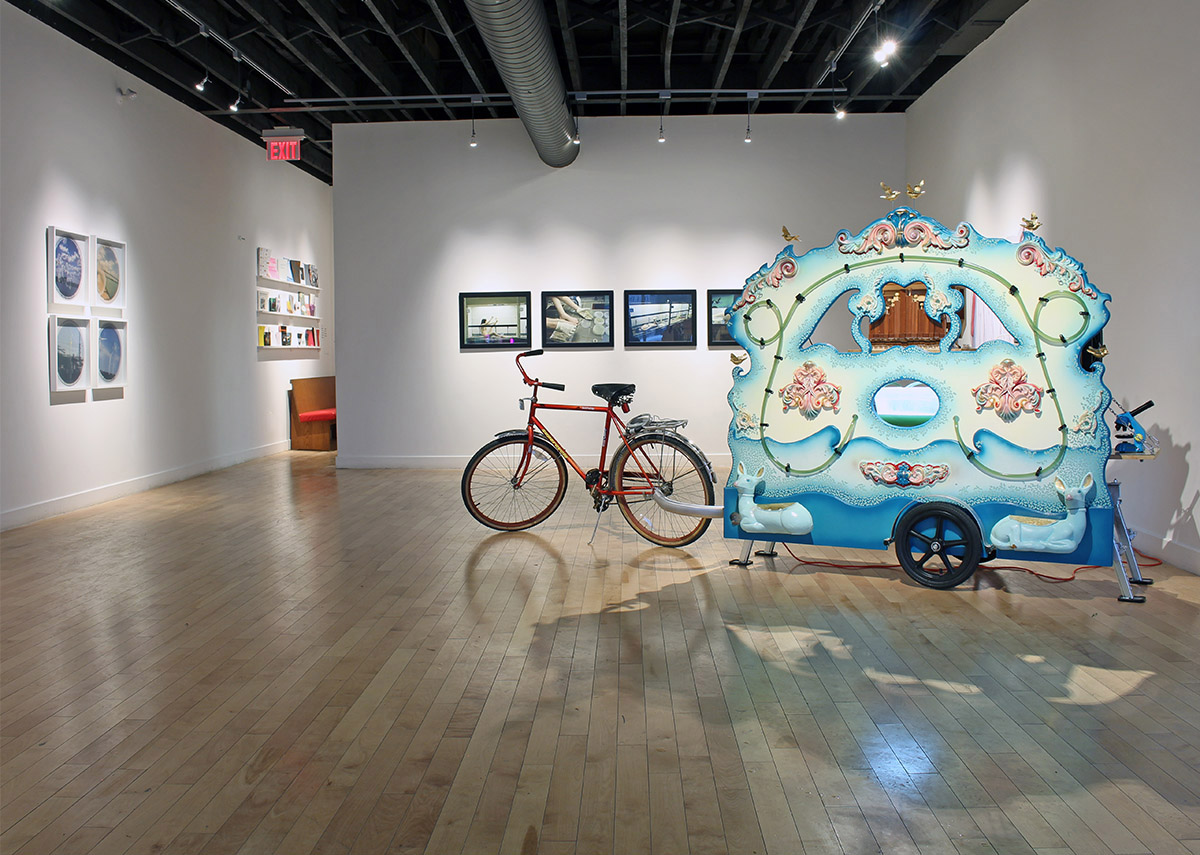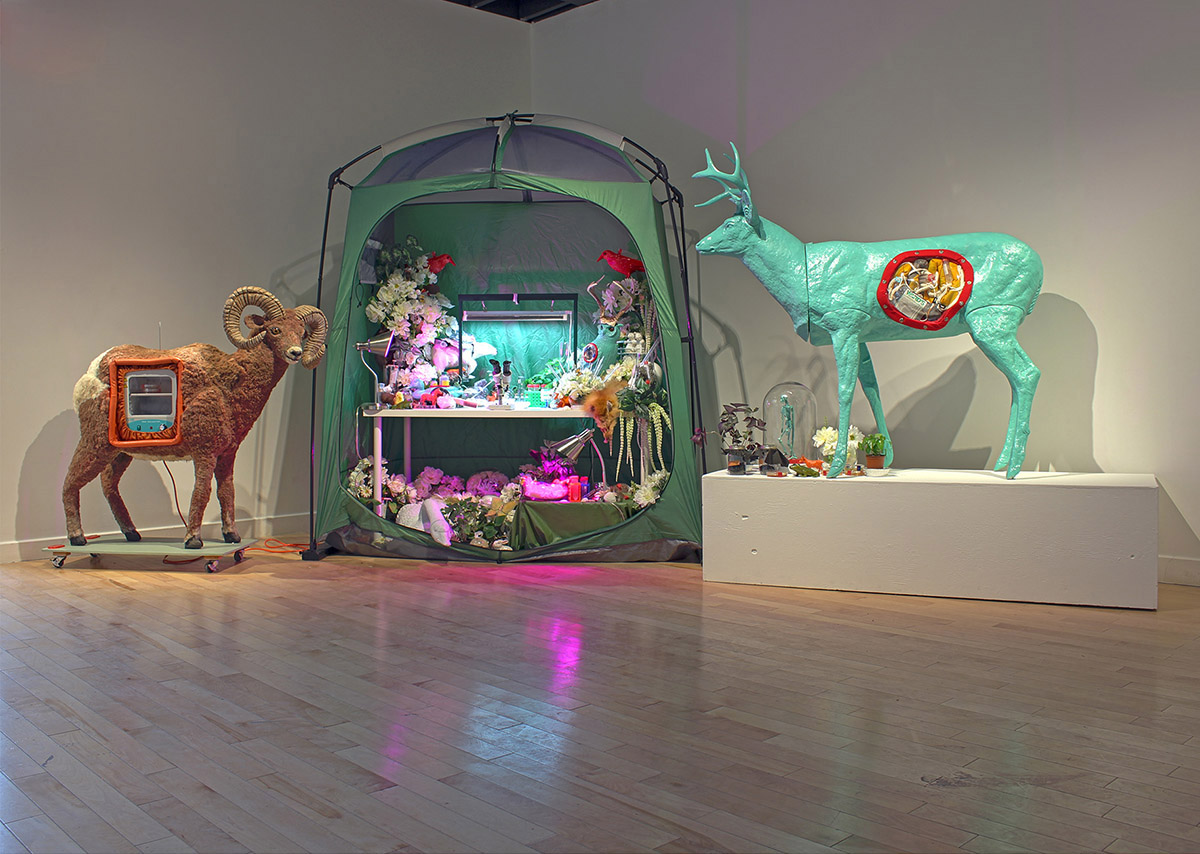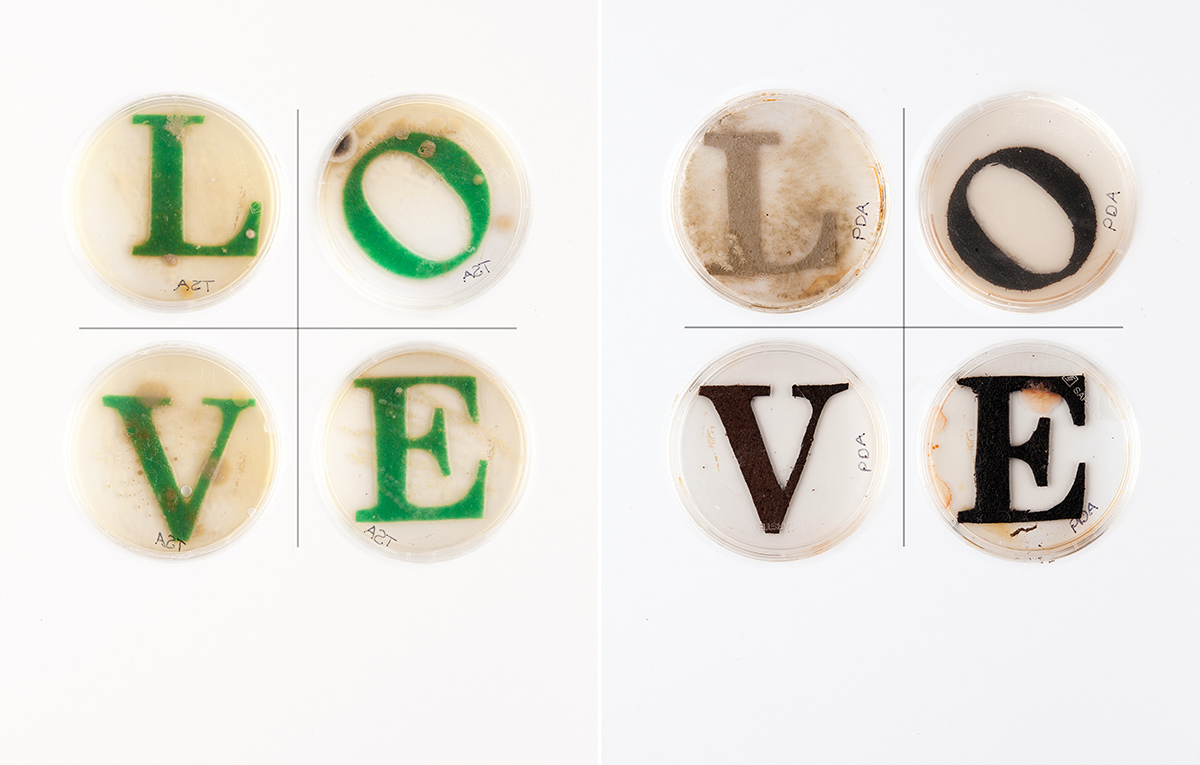Name: Jennifer Willet
Which came first in your life, the science or the art?
Art. I always knew as a child I wanted to be a professional artist. My grandfather was an artist. I completed my BFA at the University of Calgary (U of C) in 1997, and my MFA at the University of Guelph in 1999. During my undergraduate degree I worked primarily in traditional media, but explored topics surrounding science, technology, medicine, subjectivity, and the human body. While I was a student, I had the opportunity to draw anatomical studies of human cadavers at the School of Medicine at U of C. This was my first opportunity to work in a scientific space as an artist/interloper. It was an exciting and challenging experience for me. I loved the tools, the strange architectural spaces, the community standards at play in the anatomy lab between the doctors – the staff – the medical students – and the human remains. I loved the feeling of transgression, of seeing what is not meant to be seen. I had a great deal of empathy for the individuals who donated their bodies to medical education, and often found it difficult to be surrounded with so much death, especially as my family was suffering the loss of a loved one during that time. I only visited a few times, but I still admire the drawings I produced during my visits. Many years later, I worked in the same anatomy lab as an AV technician. I think these experiences sparked my desire to work in other highly specialized institutional scientific laboratories as an artist, cultural critic, and observer.
It wasn’t until I was working on my PhD in the Interdisciplinary Humanities Program at Concordia University that I found the field of bioart, and gained experience working with biotechnological protocols in the production of art. I worked with an artist collective called BIOTEKNICA (with Shawn Bailey) that posed as a fictitious bioengineering company manufacturing cancerous human tumours (teratomas) as a commercial biotech product. We were approached by Oron Catts and Ionat Zurr at the SymbioticA art and science research laboratory at the University of Western Australia to visit their lab and grow teratoma sculptures for real. My residency at SymbioticA was a transformative time for me. I was amazed by the technologies, the social practices, and rules and regulations of the lab. I was terrified about the complex bioethics of using biomaterials (mouse cell lines, human cell lines, Fetal Bovine Serum, etc.) towards the production of an artwork. I had previously made challenging artworks that examined what it is to be a body, and organism, a human during a time of significant biotechnological transformation of our bodies, our culture, other species, and our planetary ecology. But, this was different, because I was working in the realm of the real rather then the realm of representation. I was participating in the very technoscientific complex that I was critical of. It took a few years for me to understand my position as an artist in the perpetuation of our shared biotechnological future.
Which sciences relate to your art practice?
I have experience working with computer scientists, engineers, and physicists. However, I work primarily in the biological sciences for a few reasons:
(1) Content wise, I am very compelled by the ethics, aesthetics, social, economic, and technological ramifications of the of the technologization of life. I am often very worried about where the commodification of life, Western scientific colonialisms, and neoliberalism as applied to bodies, organisms, and ecologies is taking us. Some of my work critiques these terrifying tendencies. Some of my work is more propositional, presenting alternative iterations of embodied and entangled biotech futures informed by our past, feminism, community, ecological and indigenous, and scientific knowledges – towards sustainability and stewardship in our human/planet evolution. That said, my research/creation also acknowledges that human activity (like other organisms) is natural in its’ desire to consume and transform resources towards human ends such as producing shelter, tools, energy supplies, and waste products through mechanical, metabolic, and technological processes. And possibly, just possibly, the very trajectories that concern so many of us are themselves natural – part of human evolution – towards our natural end, the extinction of homo sapiens.

Jennifer Willet
Trekking the Lab into the Field…
Banff Centre for the Arts, Banff, Canada, 2009
Photo Credit: Don Lee
(2) I am really drawn to the ‘hands on’ nature of wet laboratory protocols. Although I no longer engage in a lot of fine arts craftsmanship skills in my art practice – I truly enjoy working with my hands. What makes me a good printmaker is the same set of skills that serve me well in the lab. I was very screen-based for a number of years, and as I found myself working in bioart I enjoyed the physicality of working with my hands and my body again in the production of art. Additionally, as my professional life required more and more administrative work on computers, it was meaningful to move my creative practices into other forms of activity and spaces.
(3) I am marvelled by life. There is a magic I cannot explain in seeing and being seen (or perceived, or transformed, or metabolized – or even ignored) by other life forms. It feels good (and sometimes bad, messy, and confusing) in my body to connect with other life forms – it makes me feel alive.
What materials do you use to create your artworks?
I have worked with all sorts of materials. Fine art materials, digital and commercial materials, and living materials in the lab, outdoors, and in human/cultural situations.
Artwork/Exhibition you are most proud of:
I am always most interested in my next project. I am working on a new a series called Baroque Biology. A group of 5 quirky pieces of modified lab equipment / sculptures designed for installation and bioart performances. The objects in this series are counterintuitive, they imagine ecological and biotechnology research integrated into every day life, life of the family and child, a life including imagination and play. Baroque Biology is gaudy and fantastical – somewhat like Marry Poppins (Disney, 1964), but with darker undertones as seen in Juliet of the Spirits (Fellini, 1965) within a laboratory setting. I see Baroque Biology engaging in unconventional daydreams, toppling hierarchies, welcoming new actions and participants into the lab.
The first item in the series is The Great Lakes Algae Organ (2016) a bicycle propelled street organ that grows and displays living spirulina algae. Audiences were invited to enjoy live organ music while engaging with a live algae colony. The organ becomes a talking point to discuss algae’s many roles: as a superfood; as the largest producer of oxygen in our atmosphere; as a possible source of biofuel; and as an invasive species infesting waters in the Great Lakes. People were invited to crank the street organ and view living samples of algae under the microscope. It is an absurdist object – connecting the science and technology of farming algae with a long Dutch tradition of street entertainment. But it is this absurdity – this element of play – that invites members of the general public to let their guard down and have a complex engagement with a biological artwork – an artist, a scientist, and another species.

Jennifer Willet
The Great Lakes Algae Organ in Laboratory Ecologies
Hamilton Artist Inc, Hamilton, Canada, 2017
Photo Credit: Caitlin Sutherland

Jennifer Willet
Laboratory Ecologies
Hamilton Artist Inc., Hamilton, Canada, 2017
Photo Credit: Caitlin Sutherland
We are now starting production on the second object in this series, a sterile lab work cabinet designed and built as a baroque theatre. It is called Biosafety Cabinet Puppet Play House (2017). Performers will be able to reach inside of the sterile workspace from behind the cabinet, conducting biotechnological protocols for public audiences within the context of a beautifully crafted puppet theatre.
Which scientists and/or artists inspire and/or have influenced you?
So many. In this instance I would like to highlight the bioart community. My work does not occur in a vacuum, it is part of a much larger dialogue between artists, scientists, and researchers across Canada and internationally. I am inspired by many ‘first generation’ bioartists as friends, colleagues, and mentors: George Gessert, Joe Davis, Oron Catts, Ionat Zurr, Marta de Menezes, Suzanne Anker. I am also inspired by long-time friends and collaborators Tagny Duff and Kira O’Reilly. I am also part of a complex and vital art/science community in Canada that supports and challenges my lab and my art practice. I feel pretty lucky and grateful in this regard.

Jennifer Willet and Kira O’Reilly
Refolding (Laboratory Architecture Twins)
University of Birmingham, United Kindgdom, 2010
Photo Credit: Hugo Glendinning
Is there anything else you want to tell us?
Yes! In addition to working in the art and biotechnology field, I also am director of an art and science lab called INCUBATOR Lab in the School of Creative Arts at the University of Windsor.
The lab was established in 2009 as a certified BSL1 laboratory dedicated to the research and production of living biological artworks. We are opening a new state-of-the-art facility in fall 2017, a BSL2 bioart lab / performance space as part of the new UofW arts complex in downtown Windsor. Our new lab will serve as a teaching, research, and public performance space for live biotechnological protocols in the production of contemporary art. The lab hosts an annual undergraduate class in bioart, graduate students, visiting scholar, and faculty research. Last year, I received SSHRC funding (in collaboration with Alana Bartol and Amanda White) to host annual art/science events investigating interspecies relationships in the laboratory environment.

Jennifer Willet
INCUBATOR Lab Wall Mural
Ontario Science Centre, Toronto, Canada, 2013
Photo Credit: Arturo Herrera
Artist Links: Facebook, Incubator Art Lab
Share this Post




